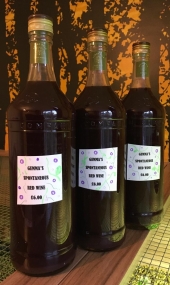




















To quote:
MycoGrow™ For Lawns contains spores of 4 different species of endomycorrhizal fungi, plus additional beneficial organisms for control of lawn-disease-related pathogens.












"the qualities of these bacteria, like the heat of the sun, electricity, or the qualities of metals, are part of the storehouse of knowledge of all men. They are manifestations of the laws of nature, free to all men and reserved exclusively to none." SCOTUS, Funk Bros. Seed Co. v. Kale Inoculant Co.




 ops:
ops:
 (There are exceptions; some better companies are microprickng bags to increase breathability; Organic Mechanic, Coast of Maine and North Country Organics all fit this bill).
(There are exceptions; some better companies are microprickng bags to increase breathability; Organic Mechanic, Coast of Maine and North Country Organics all fit this bill).Connecticut Accredited Nurseryperson
Accredited Organic Land Care Professional (NOFA)




"Although the world is full of suffering, it is full also of the overcoming of it." - Helen Keller
--
Jeremiah Bailey
Central Indiana








Connecticut Accredited Nurseryperson
Accredited Organic Land Care Professional (NOFA)




"Although the world is full of suffering, it is full also of the overcoming of it." - Helen Keller
--
Jeremiah Bailey
Central Indiana








Connecticut Accredited Nurseryperson
Accredited Organic Land Care Professional (NOFA)

|
the midichlorian count on this tiny ad is off the charts!
The new gardening playing cards kickstarter is now live!
https://www.kickstarter.com/projects/paulwheaton/garden-cards
|



